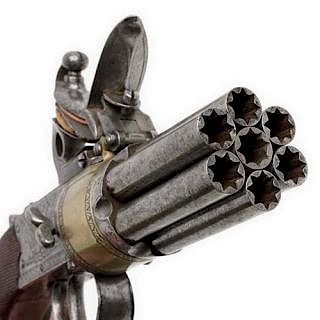U.S. Springfield Model 1873 Carbine w/Modified Buttplate
About Seller
6270 Este Ave.
Cincinnati , OH 45232
United States
With offices in Cincinnati, Cleveland and Denver, Cowan’s holds over 40 auctions each year, with annual sales exceeding $16M. We reach buyers around the globe, and take pride in our reputation for integrity, customer service and great results. A full-service house, Cowan’s Auctions specializes in Am...Read more
Two ways to bid:
- Leave a max absentee bid and the platform will bid on your behalf up to your maximum bid during the live auction.
- Bid live during the auction and your bids will be submitted real-time to the auctioneer.
Bid Increments
| Price | Bid Increment |
|---|---|
| $0 | $25 |
| $500 | $50 |
| $1,000 | $100 |
| $2,000 | $250 |
| $5,000 | $500 |
| $10,000 | $1,000 |
| $20,000 | $2,500 |
| $50,000 | $5,000 |
| $100,000 | $10,000 |
About Auction
Nov 4, 2015 - Nov 7, 2015
Cowan's Auctions dawnie@cowans.com
- Lot Description
U.S. Springfield Model 1873 Carbine w/Modified Buttplate
.45-70 caliber, 22" barrel, S/N 18268. Blued finish, long wrist wood stock, high arch breechblock, saddle ring and bar present, correct sights. "U.S. Springfield/1873" with spread eagle on lockplate, "Model 1873" over eagle head and crossed arrows over "U.S." on top of "trapdoor;" circle "P" proof and stamped small inspector initials "J.C._" behind lower tang with "ESA" cartouche on left side of stock above trigger group. Iron buttplate has been modified to accept a brass "door" similar to the type used in Winchester rifles of the time with stock drilled to presumably accept a cleaning rod and broken shell extractor. Also, on top of the butt stock at the rear are stamped the numbers "1" and "31."This interesting early "Custer Range" '73 carbine is in overall very good condition displaying a brown patina to the barrel and mixed plum brown/grey patina to the frame and lockplate including traces of original blue in protected areas. The action is crisp, the markings are sharp and the bore is overall very good. The wood stock is also very good overall with some scattered old mars, dings and scratches from carry and storage.Condition
Accompanying this gun is a copy of a Jan.-Feb. 2010 The Gun Report article by noted long-time carbine collector, Ron Navratil, concerning the buttplate modification. In summary, the writer notes that as of his article's writing, 20 such Custer range carbines have been recorded with their original buttplates modified in this manner (and buttstocks drilled to a depth of approximately 8.5"). The author opines this modification, post-Custer Battle, may have been done to provide troopers with jointed cleaning rods and broken shell extractors given lessons tragically learned at the Little Big Horn. (Carbines became unserviceable when expended shell casings could not be removed once fired due to expansion, heat of the gun, black powder build-up, grime, etc. making the carbine essentially only good as a club.)
Beyond consideration of this "lessons learned" modification, it is important to note that this gun falls closely in number to several re-captured '73 carbines from Indian forces after the Battle of the Little Big Horn by U.S. troops according to DuMont's Custer Battle Guns (page 81, 1988 edition): S/N 18137, 18141 and 18202 ("Report of the Chief of Ordnance, Ordnance Notes," No. CXV, October 1, 1879). - Shipping Info
-
SHIPPING. At the request of the buyer, Cowan's will authorize the shipment of purchased items. Shipments usually occur within two weeks after payment has been received. Shipment is generally made via UPS Ground service. Unless buyer gives special instructions, the shipping method shall be at the sole discretion of Cowan's Auctions, Inc.. Cowan's is in no way responsible for the acts or omissions of independent handlers, packers or shippers of purchased items or for any loss, damage or delay from the packing or shipping of any property.
-
- Buyer's Premium



 EUR
EUR CAD
CAD AUD
AUD GBP
GBP MXN
MXN HKD
HKD CNY
CNY MYR
MYR SEK
SEK SGD
SGD CHF
CHF THB
THB


















